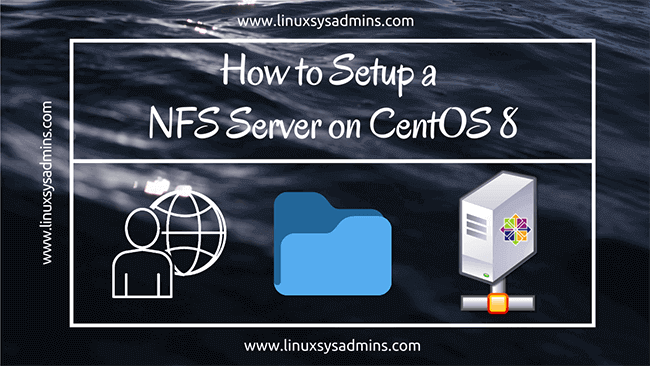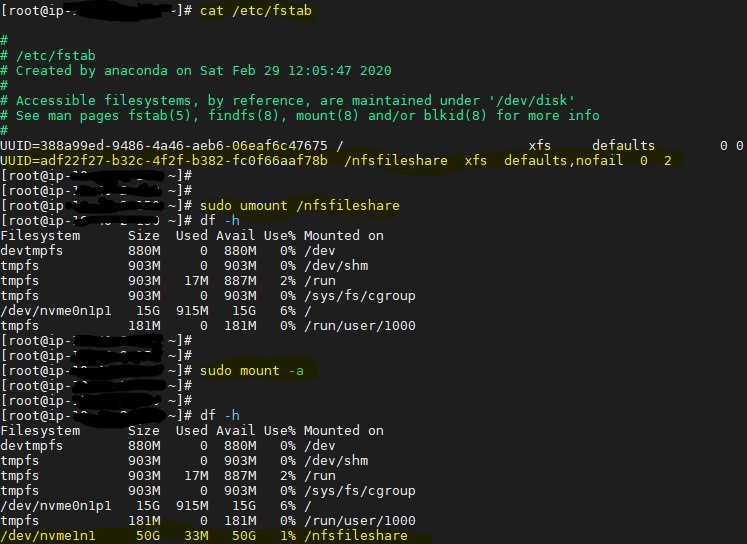

- #MAC OS NFS SERVER MAC OS X#
- #MAC OS NFS SERVER MAC OS#
- #MAC OS NFS SERVER INSTALL#
- #MAC OS NFS SERVER SOFTWARE#
- #MAC OS NFS SERVER MAC#
Drag this directory to the Finder sidebar to make it easy to access in the future. You should find your exported directory in there, e.g. In the Finder menu, select Go -> Go to Folder, and type /net/SERVER_HOST_NAME, e.g. (If you previously tried to mount an NFS volume, unmount it first, like so: sudo umount -f /net/fileserver.local/home/ubuntu) Refresh the automounts by running sudo automount -vc I've found myself having to go back to back to this answer once a year or so re-apply the changes.
#MAC OS NFS SERVER SOFTWARE#
Note: It appears that some macOS software updates can overwrite this file and remove your changes.
#MAC OS NFS SERVER MAC#
I got kernel panics on the Mac with this, so I went back to the default (NFSv3).

#MAC OS NFS SERVER INSTALL#
It really is that simple, but it took me quite a while, and some suggestions from people on IRC to figure it out, because searching the web for “NFS behind NAT” really didn’t produce any sensible results.Install the NFS server as per the Ubuntu NFS guide: sudo apt install nfs-kernel-serverĮdit /etc/exports: sudo nano /etc/exports To get this done, I simply had to open the “Go to Folder” dialog (Command+Shift+G) and enter the mount point: “/Volumes/jabo”. Of course I wanted it to show up in Finder too, as it would when using the “Connect to Server” dialog.

On /Volumes/jabo (nodev, nosuid, mounted by dawuss) You can confirm this using the mount command: mango:~/Downloads/Disk Images dawuss$ mountĪutomount -nsl on /Network (automounted)Īutomount -fstab on /automount/Servers (automounted)Īutomount -static on /automount/static (automounted) However, nothing stops us from using the command line, so it was just a matter of opening my favorite terminal program (iTerm) and entering: mango:~ dawuss$ mkdir /Volumes/jaboĭ:/home/jabo /Volumes/jabo/Īssuming you already set up your NFS server to work using unprivileged ports, this will set up the NFS connection as usual, only now using TCP as transport protocol instead of UDP. The GUI connects using UDP, so it doesn’t work. The solution is simple: use TCP for the NFS connection. Of course, thinking about it, this made perfectly sense: UDP connections are stateless, and therefore cannot be masqueraded properly (there is no way of knowing where a UDP packet is supposed to go when it arrives at the router). A look at system.log confirmed this: Sep 11 15:32:47 mango kernel: So the problem had to be on the client side. The share opens, i can read text files i've placed in the folders.
#MAC OS NFS SERVER MAC OS#
The log file on the server side would say everything is OK: Sep 11 15:25:22 persephone rpc.mountd: authenticated mount requestįrom :57945 for /home/jabo (/home/jabo) Client Group (ALL MACHINES) Encoding (ANSI) Permissions (Read/Write) Allow Root Access Checked Mac OS 10.7.4. While trying to mount the directory “/home/jabo” from my server on my Mac, the mounting would appear to succeed, but it would never get accessible, and eventually I would just get the “Server connection interrupted”” message from the Finder. In some respects, that convergence is incomplete, and in other respects, the divergence is deliberate.
#MAC OS NFS SERVER MAC OS X#
I had been having problems getting my NFS volumes mounted when I was connected to a network behind a masquerading NAT router. As Mac OS X has evolved, it has become more UNIX-like in many ways. Sometimes solutions are so easy, you just overlook them. 11 September, 2005 NFS behind NAT on Mac OS X


 0 kommentar(er)
0 kommentar(er)
